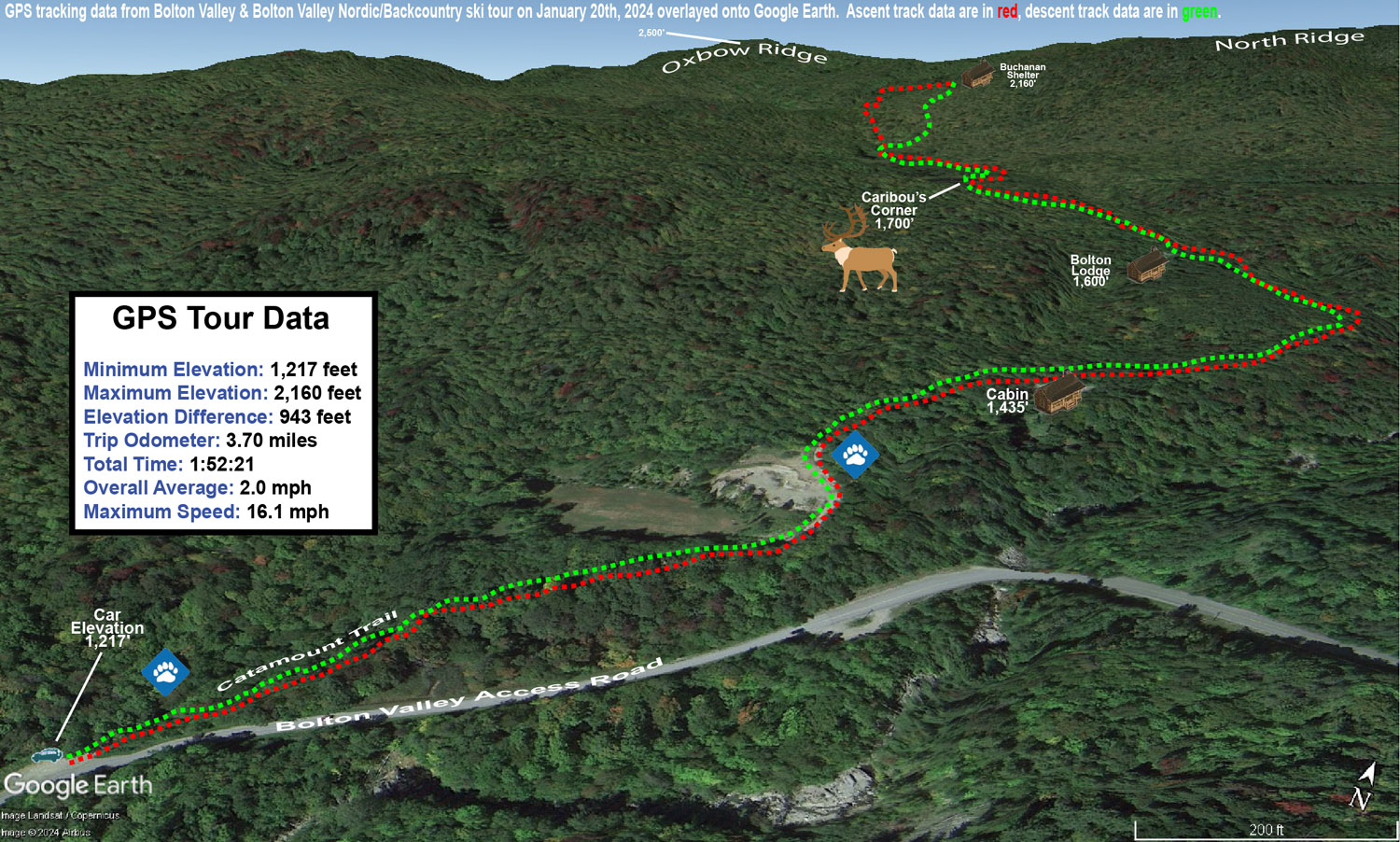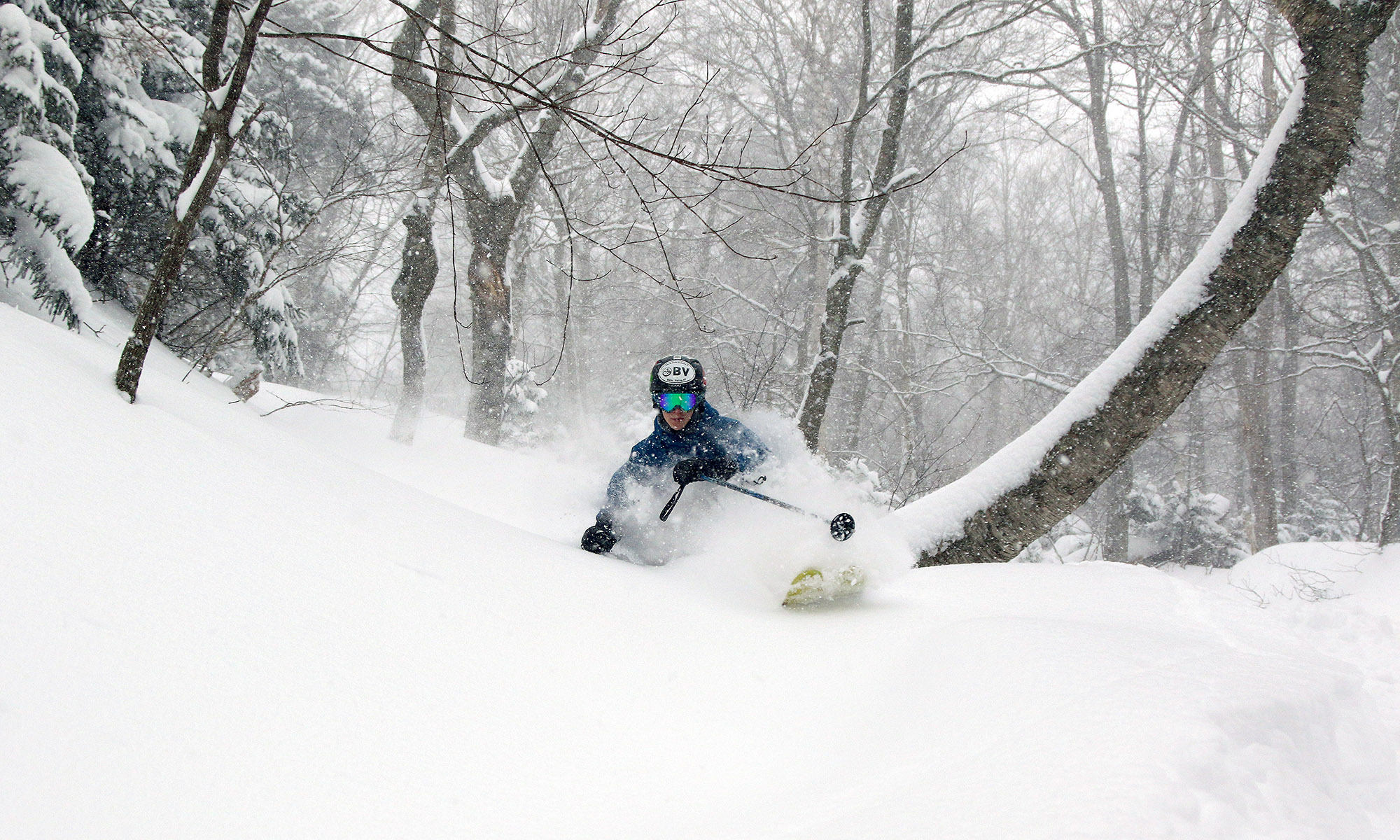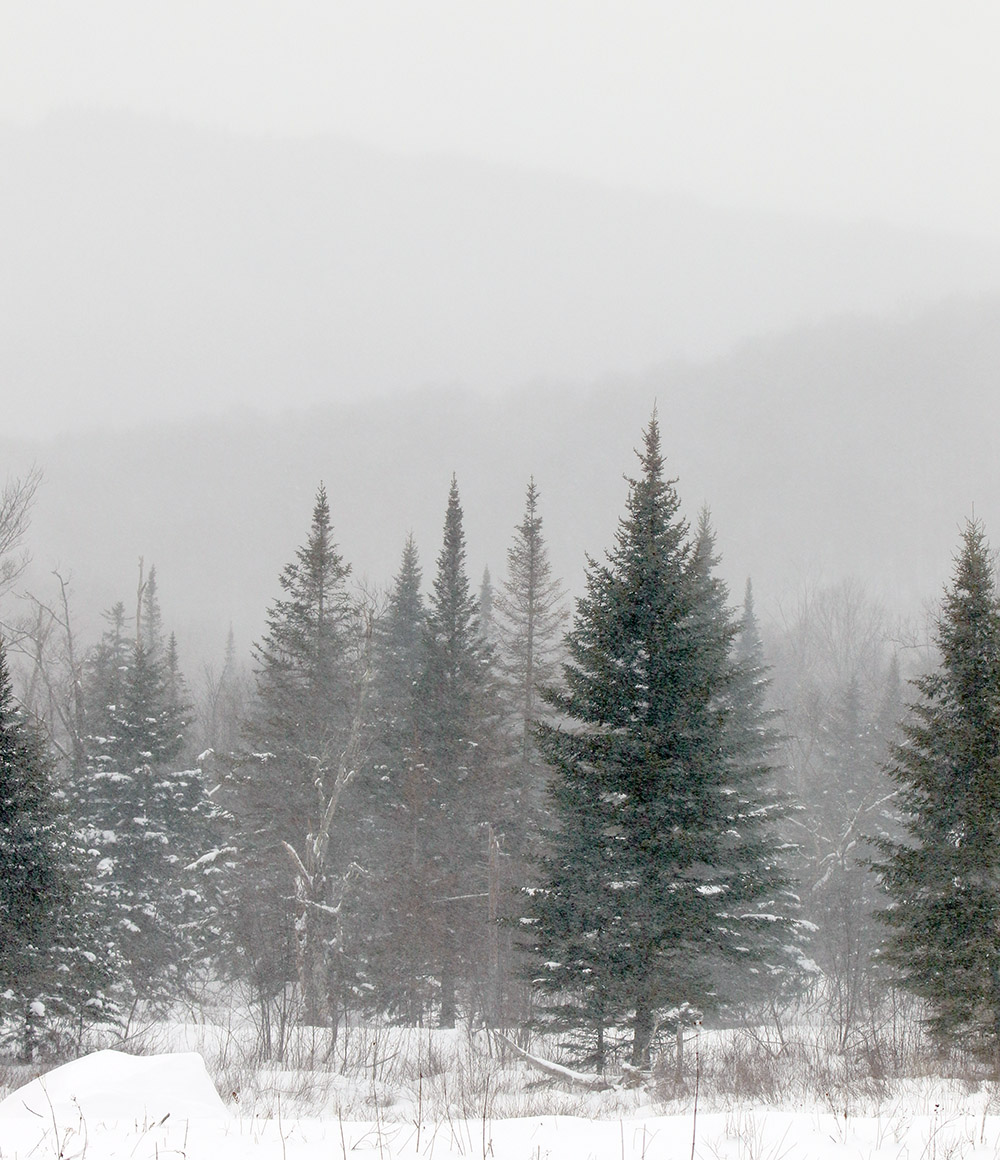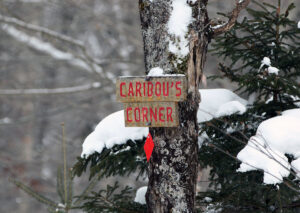
Since today’s forecast was in the single digits F, and there was the possibility of wind as well, ski touring seemed like the natural choice vs. riding the lifts. In addition, our current weather system, while certainly enough to freshen up surfaces, isn’t expected to be large enough to really reset the powder in areas that had been recently skied.
With the cold temperatures, and the way the depth and quality of the snowpack has been improving over the past week or two, I decided that I’d tour in some relatively low elevations nearby to see what potential they held. I started my tour at the Catamount Trail access area at roughly 1,200’ on the Bolton Valley Access Road, and did a ski tour up to the Buchanan Shelter near the 2,200’ elevation. That’s not a heavily used part of the Bolton Valley Backcountry Network, so I suspected that untracked powder would be relatively plentiful.
While I was out touring in the afternoon, light snow fell continuously, and throughout the tour I checked powder depths above the highest detectable subsurface layer in the snowpack. The powder depth profile I found with respect to elevation was as follows:
1,200′: 6-8”
1,500′: 6-8”
1,800′: 7-8”
2,000′: 7-8”
2,200′: 8-9”
Even with cold temperatures, powder of the 3-4% H2O variety that we recently received from Winter Storm Heather can’t sustain that level of loft forever. Indeed, the powder I encountered today had settled down to something more in the 6-8% H2O range, so the numbers above are the depths to which the surface snow has currently settled. Obviously all these recent storms continue to push the useful snowpack to lower and lower elevations, so overall snowpack depth wasn’t an issue even down to the 1,200’ mark. It’s hard to get estimates of the total snowpack depth because the lower layers are so settled and thick, but the snowpack is maybe a couple feet deep down at 1,200’? While I don’t have an exact number, even if there was only a foot of base below the powder, it’s so consolidated and flush with liquid equivalent that it would easily do the job.
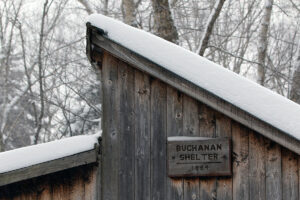
In terms of the skiing, the best turns were certainly up in the slopes just below the Buchanan Shelter where there is some solid pitch up into the black diamond realm. The approach portions of the tour have enough pitch to make a nice glide out and grab a few low-angle turns in certain spots, but with the current depths and density of the powder, descent speed is on the slower side right now. Also, cold temperatures like these reduce ski glide somewhat due to less melting, so that factors in as well. In the slopes up by the Buchanan Shelter I had the run of the area though in terms of fresh tracks. One person had recently skied back down the Beaver Pond Access Trail, but that was even a bit old, so it must have been from a couple of storms ago. Off in the trees, there were no prior tracks of any kind, so I had my pick of the most open lines, streambeds, chutes, etc. Fat skis were the call, and turns were definitely bottomless, but the best turns came from hitting those correct areas that appropriately accommodated the pitch, powder depth, cold snow, tree spacing, and all that. There were some excellent powder turns on the tour though, so even down to the lower elevations in the ~1,000’ range, the current snowpack is really delivering.
